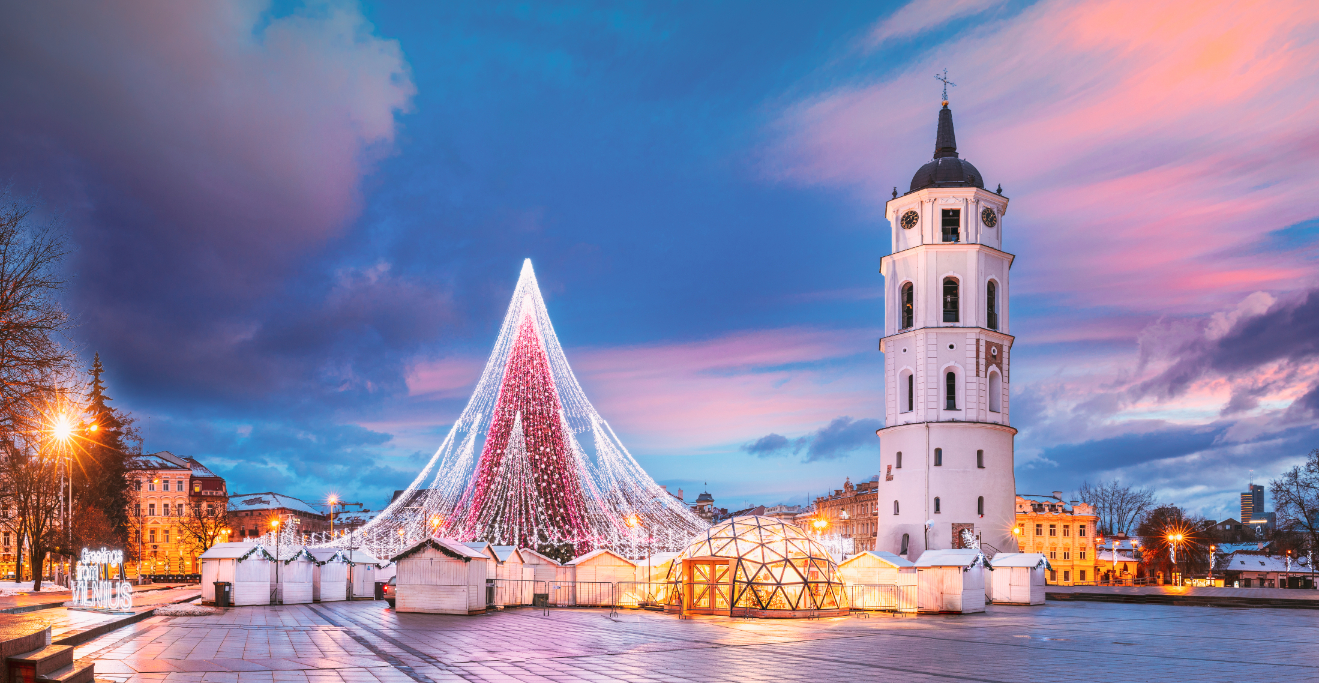What to see in Vilnius
Vilna is one of those cities that may surprise you if you don’t have too many references to it. The capital of Lithuania has a beautiful old town – declared a World Heritage Site – and very rich history. The urban landscape is mostly made up of Baroque buildings, although there is a good variety of styles. Regarding its past, Vilnius is quite a touristy and “Europeanized” city, but many traces of its communist stage can still be seen. Here are our humble suggestions on places to see in Vilnius, in no particular order, and with practical links. And if you plan to visit the Baltic countries, do not hesitate to take a look at our posts.
Gate of Dawn
One of the best ways to enter Vilnius is through the Gate of Dawn (Aušros vartai), an ancient gateway to the city built in the early 16th century. The gate is especially beautiful on the inside of the wall and houses a highly venerated chapel. A few meters away we also recommend visiting the Church of St. Teresa (Šv. Teresės bažnyčia), with its beautiful Baroque interior, the Orthodox Church of the Holy Spirit, with its striking green altarpiece, and the Basilian door, also Baroque.
Church of Santa Ana
As you will see, there are many very beautiful churches of different religions in Vilnius. Perhaps the one with the most beautiful exterior is the Church of Santa Ana (Onos Bažnyčia, the year 1500), with its original flamboyant Gothic façade. Attached to it is the much more modest Bernardinų Bažnyčios. Behind these two churches, you can take a good walk through Bernardine Park, with its river, its fountains, its groves, etc.
Vilna Ghetto
During the Nazi occupation, there was a Jewish ghetto (divided into two zones) in which thousands of people deprived of liberty lived. Most of them, some 55,000, would end up being killed in the nearby forests. Today in the area we can hardly find a commemorative poster on Žydų street nº3, in the place that the old synagogue used to occupy. Somewhat far from the center is the HKP 562 Labor Camp memorial, which we did not go to. Where we were was in the Choral Synagogue, the only synagogue in the city. It is small but worth a visit.
Townhall
The Town Hall (Vilniaus Rotušė) is not one of the most beautiful buildings in Vilnius, but it has a cute neoclassical facade that looks great in photos. If we suggest this place, it is rather because of the atmosphere in the huge Town Hall Square and the touristy Pilies street, the oldest in the city.
Gediminas Hill
where the Gediminas Tower and a few ruins of the old castle are located. From there you have good views of the old town and the Hill of Three Crosses. You can visit a small medieval museum without too much charm, but it allows you to climb the tower for even better views. At the foot of the hill are the Gediminas statue, the National Museum, the Palace of the Grand Dukes of Lithuania, and the Vilnius Cathedral, which has a somewhat bland interior, but a rather attractive neoclassical facade. And returning to the topic of views, you may be interested in the option of climbing the TV Tower, located on the outskirts
Republic of Užupis
The Republic of Užupis is a small Vilnius neighborhood that proclaimed itself “independent” in 1997. It has its own flag, currency, and even an army of just 15 people. The neighborhood itself is not much unusual, if perhaps a bohemian and artistic touch, but you can go down the street where its little Constitution is displayed in multiple languages . The funny articles include the right of dogs to behave as such. The most notable monument is the Angel of Užupis, erected in 2002.
Trakai
If you search Google images for things like “Lithuania tourism”, “Lithuania photos”, “Lithuanian guide” or things like that, it is very likely that you will come across a photo very similar to the one that follows hundreds of times. this paragraph. It is the Trakai Castle, located west of Vilnius, the capital of the country. It is not necessarily the most interesting place in Lithuania, but it is perhaps the most photogenic tourist attraction. In this post we tell you about its history and the visit. And do not forget that we have more articles about the Baltic countries that may be useful to you.
Brief history of Trakai Castle
The Trakai Castle began to be built in the s. XIV by order of the monarch Kęstutis, who established his main residence there. At that time the Grand Duchy of Lithuania was one of the last pagan territories in Europe and the castle suffered numerous attacks by the Teutonic Knights. His son Vytautas was responsible for a second phase of construction at the beginning of the 15th century and a third expansion would still be carried out in the same century. After the decisive Battle of Žalgiris, in which the Polish-Lithuanian alliance finally defeated the Teutonic Knights, the castle lost defensive importance, becoming a quiet holiday residence and later a prison. In the 17th century the castle was seriously damaged during the wars against Muscovy and its ruins were abandoned. It was not until 1961 when its final reconstruction was completed and it became one of the main tourist attractions in Lithuania.
Trakai Castle is one of those places that is well placed for the photo. The lake, the island, the boats, the drawbridge, and even the ducks seem to be there for you to take the perfect snapshot. And the truth is that the place is to stay all morning of contemplation. If the weather is good, it may be a good idea to rent a skate to enjoy the surroundings and be able to surround the castle.
Kaunas
At the embrace of two rivers, Nemunas and Neri, one finds the city of Kaunas – a quirky old town, that captivates with a variety of country’s best galleries and its candid nightlife. Enough to offer for every visitor, this valiant city builds towards its stint as European Capital of Culture 2022. From its dainty Old Town to the 14th-century fort, under the gothic spires of the Hanseatic House of Perkunas and right into the embrace of the tree-lined avenue – this city, briefly honored as the capital of Lithuania, is a rough gem that no one should miss out on exploring and unraveling its caprices.
Hill of Crosses
The Hill of Crosses (Kryziu Kalnas in Lithuanian) is, as you might expect, a small mountain littered with thousands of crosses. Where did they come from? The most widespread version says that the Lithuanians began to place them there spontaneously in 1831 and in 1863, after two failed rebellions against Tsarist Russia. The relatives of the victims, unable to recover the bodies, put a cross for each of the fallen. It is estimated that the scarce 20 initial crosses were passed to almost 200 before the end of the century. And it is that the Hill of Crosses became famous not only as a place of Catholic worship but as a symbol of resistance against the invader.


Comment (0)